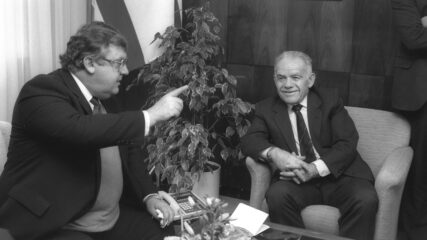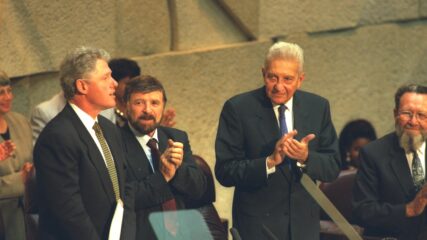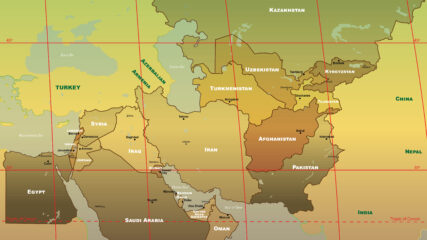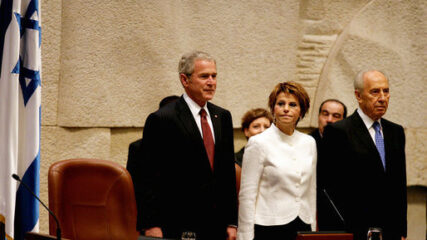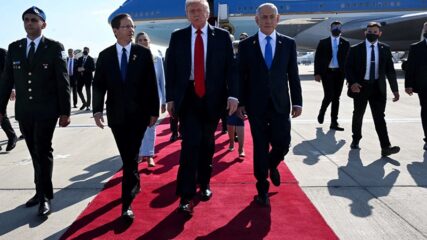Some 2,500 people, including Israeli Interior Minister Israel Bar-Yehuda and Polish Ambassador Antoni Bida, gather at Kibbutz Lohamei HaGetaot in the western Galilee for a commemoration of the first Yom HaShoah (Holocaust Remembrance Day) since the Knesset enacted the Martyrs and Heroes Remembrance Day Law four weeks earlier.
The event is held at the kibbutz’s Ghetto Fighters’ House, formally the Itzhak Katzenelson Holocaust and Jewish Resistance Heritage Museum (named for a poet who was killed at Auschwitz), which in 1949 became the first Holocaust museum in the world.
Kibbutz Lohamei HaGetaot (“The Ghetto Fighters”), named for the Jews who fought against the Nazis after being forced into ghettos, was founded by Holocaust survivors and resistance fighters. Among the founders is Yitzhak “Antek” Zukerman, one of the leaders of the Warsaw Ghetto Uprising of 1943. The date of Yom HaShoah, 27 Nisan, is chosen because it is close to the date the uprising began without conflicting with the holiday of Passover.
At the first national gathering to commemorate Holocaust Remembrance Day, Zukerman says, “We came here to build homes filled with life.”
The Ghetto Fighters’ House features permanent exhibitions on Jewish Warsaw, Jewish Holland, the Warsaw Ghetto Uprising, the Nazi death camps, the testimony of the kibbutz’s Holocaust-surviving founders and pre-Holocaust Jewish culture in Europe. The museum also displays Adolf Eichmann’s glass booth from his trial in Jerusalem in 1961, during which Zukerman is one of the witnesses for the prosecution.


